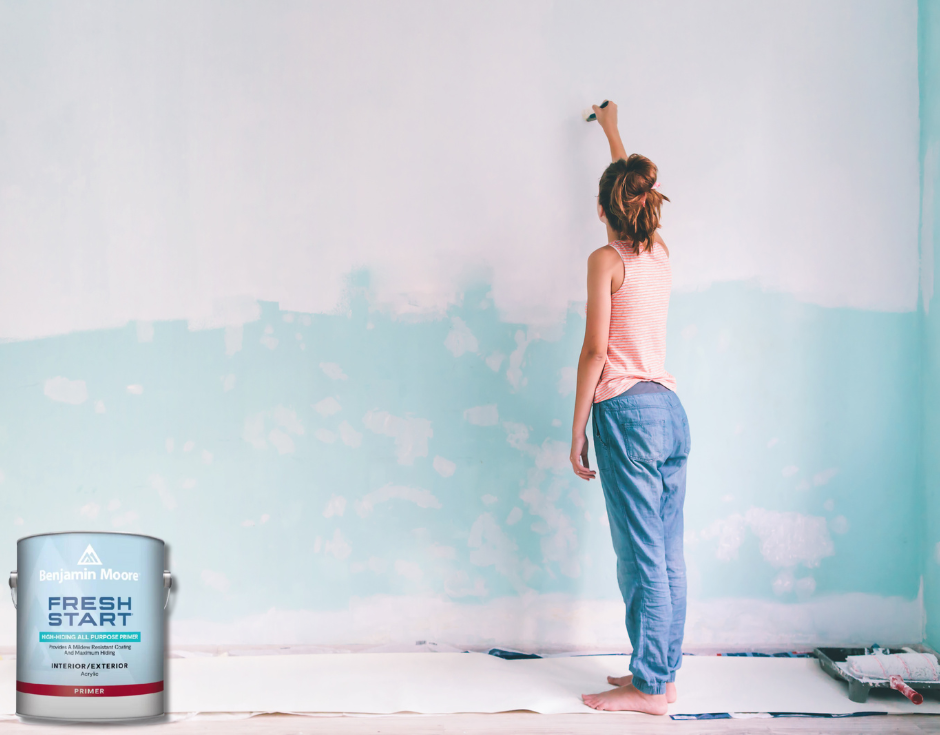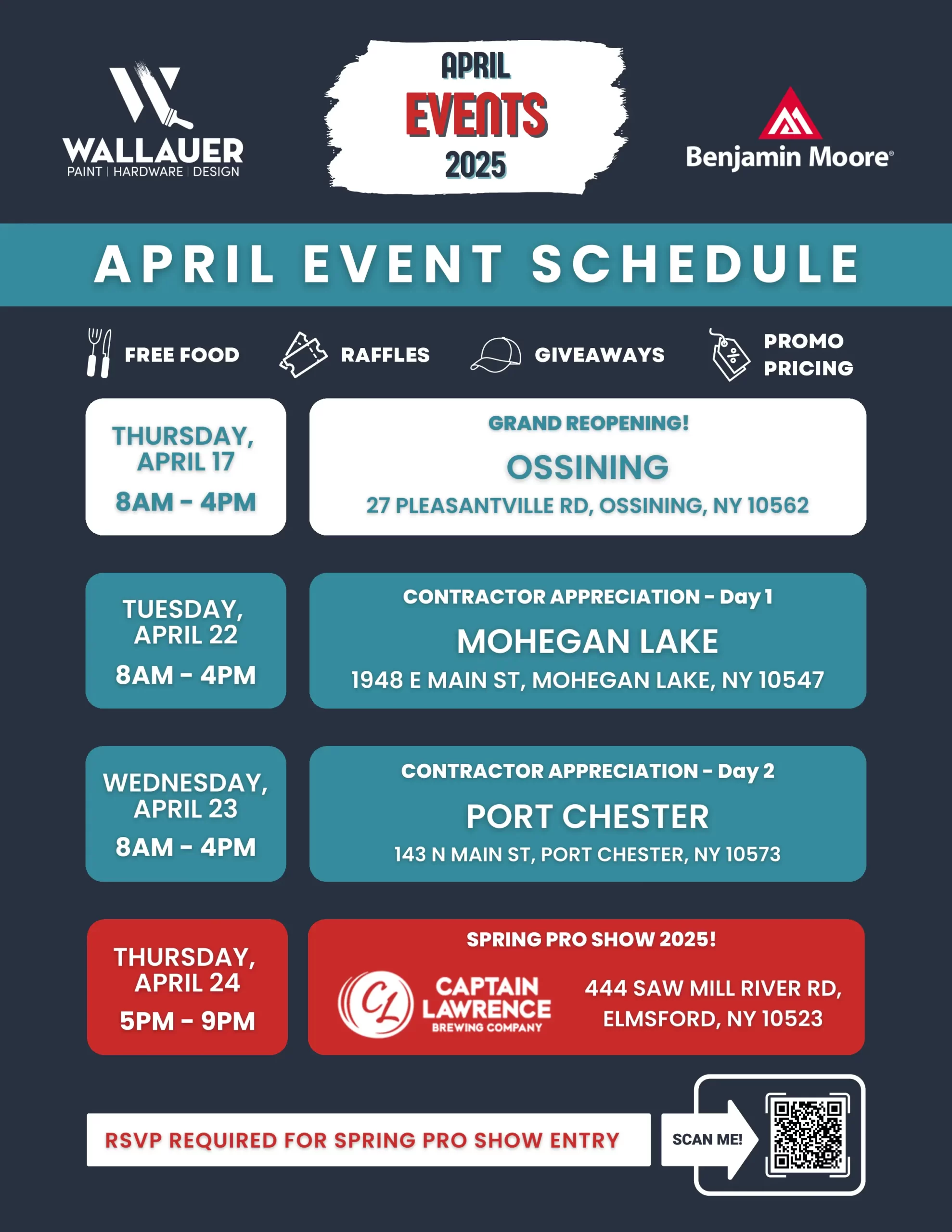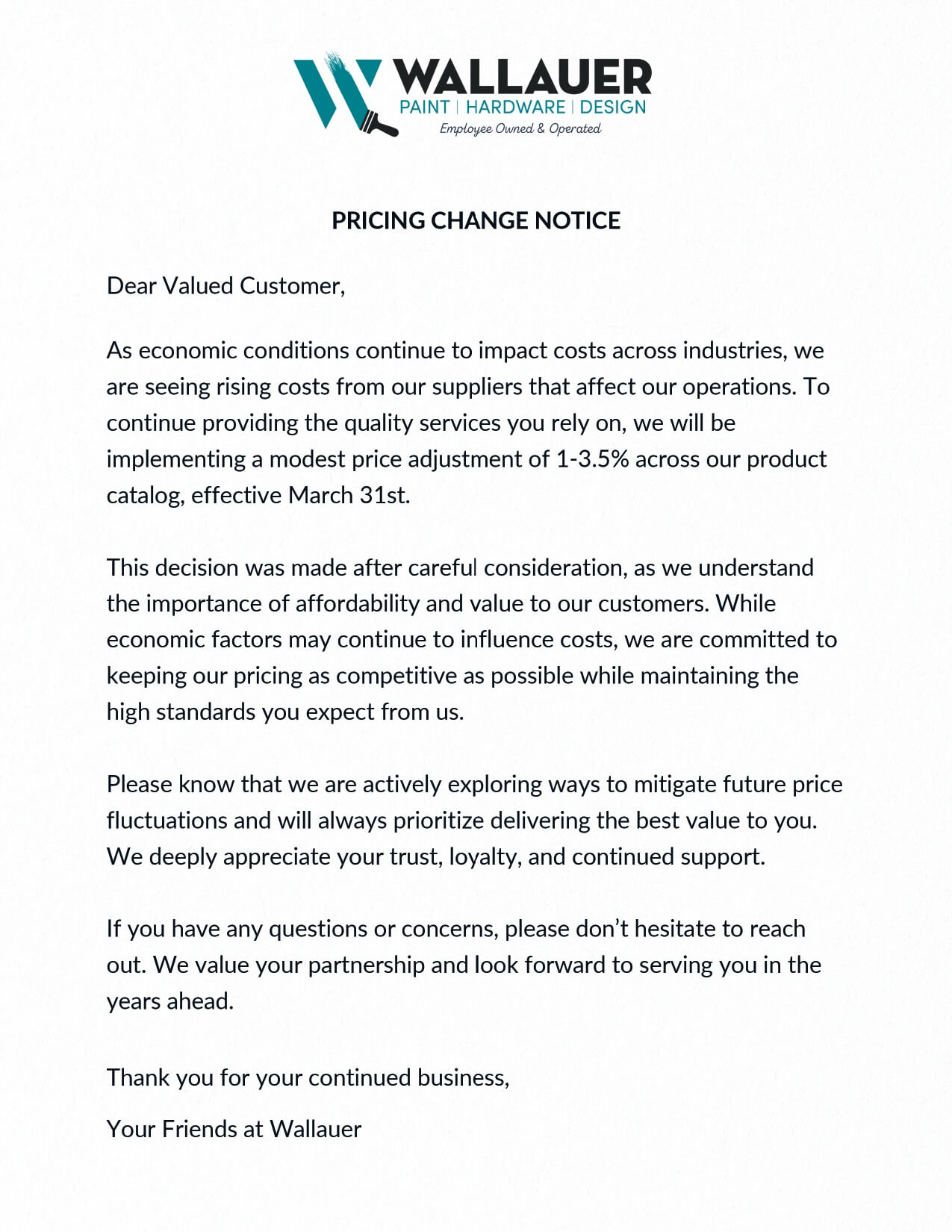Starting a painting project can be exciting, whether refreshing a room’s look or creating a new vibe for your space. However, one crucial step should be considered for a professional and lasting finish: applying a paint primer. This foundational layer is key to achieving optimal results and understanding its importance can make all the difference in your painting projects. Learn why you should use paint primer for your home DIY home painting project and how it can help you achieve the perfect look.
What is Paint Primer and Why Should You Use It?
Paint primer is specifically formulated to ensure a smooth, even, and durable finish for your paint job. Unlike regular paint, primers are designed with unique ingredients that improve adhesion to the surface, creating a bond that helps the topcoat of paint adhere better. This is particularly crucial on surfaces like new drywall or areas where previous layers of paint have been stripped away.
Moreover, primers are excellent at blocking and concealing stains, preventing them from bleeding through the final coat. This feature is especially beneficial when dealing with surfaces that have been affected by smoke or water damage. Primer paints lay the groundwork for a flawless finish by hiding surface imperfections and stains.
Preparing the Surface Before Painting
The key to a successful painting project lies in thorough preparation. This involves cleaning the wall or surface to remove dust, grime, or oily residues. For new drywall, a quality primer is essential to seal the porous surface and provide a uniform base for the paint.
Cleaning the Surface
-
- General Cleaning: Start by removing dirt, dust, and grease from the surface with a mild detergent solution. This is particularly important in kitchens and bathrooms where surfaces can accumulate grime.
- Mold and Mildew: Treat mold or mildew spots in areas prone to moisture with a solution of bleach and water (1 part bleach to 3 parts water) or a commercial mildew remover. Always wear protective gloves and ensure the area is well-ventilated.
Sanding
-
- Smooth Surfaces: Lightly sand glossy or smooth surfaces to create a slight texture for better primer and paint adhesion. Use fine-grit sandpaper and sand in the direction of the surface texture.
- Wood Surfaces: For wood, sand along the grain to avoid scratches. Start with a medium-grit sandpaper for rough areas and finish with a fine-grit for a smooth surface.
Repairing Imperfections
-
- Fill Holes and Cracks: Use spackle or wood filler to fill nail holes, dents, or cracks. Allow the filler to dry according to the manufacturer’s instructions, then sand smoothly.
- Caulking: Apply caulk to seal gaps in trim, baseboards, or where different materials meet. Smooth the caulk with a wet finger or tool and let it dry before painting.
Choosing the Right Paint Primer for Your Project
Selecting the appropriate primer is as important as choosing the right paint color. For instance, if you’re working with a high-end paint brand like Benjamin Moore, Fine Paints of Europe, or Farrow and Ball, pairing it with a compatible primer ensures the paint’s color and finish are displayed at their best. Each brand offers primers specifically formulated to complement their paints, enhancing durability and appearance.
How to Apply Paint Primer
Tips and Tricks to Get a Perfect Finish
When applying primer, ensure the room is well-ventilated. Start with a thin, even coat, using a brush or roller suitable for the surface texture. Allow the primer to dry completely before applying the topcoat. This not only ensures better adhesion but also contributes to the overall longevity of the paint job.
Different Types of Primers to Consider
When embarking on a painting project, selecting the correct type of paint primer is as crucial as choosing the perfect color. Primer paints are not one-size-fits-all; different surfaces and projects require specific types of primers to achieve the best results. Here’s a look at various primer options from renowned brands like Benjamin Moore, Fine Paints of Europe, and Farrow & Ball, each designed to cater to different painting needs.
Benjamin Moore Primers
Benjamin Moore offers various primer paints suitable for various surfaces and conditions. Their Fresh Start® High-Hiding All-Purpose Primer is an excellent choice for covering previous colors or stains, ensuring a uniform surface for the new paint. For more challenging surfaces, INSL-X® STIX® Waterborne Bonding Primer is a top pick, known for its exceptional adhesion to hard-to-coat surfaces, making it ideal for glossy finishes, PVC, or ceramic tiles.
Fine Paints of Europe Primers
Fine Paints of Europe is renowned for its high-quality finishes, and their primers are no exception. Their Eurolux Acrylic Primer/Undercoat provides a perfect base for interior and exterior projects, ensuring a smooth and durable foundation. Fine Paints of Europe’s Oil Primer offers deep penetration and a sturdy base for wood surfaces, enhancing the wood’s natural beauty and ensuring longevity.
Farrow & Ball Primers
Farrow & Ball’s primers are tailored to complement their richly pigmented paints. Farrow & Ball’s Interior Wood Primer & Undercoat are designed to enhance the finish of their estate and modern emulsion paints, ensuring depth of color and durability. For metal surfaces, Farrow & Ball’s Metal Primer & Undercoat provides rust protection and enhances the finish of the topcoat, ensuring a sleek and long-lasting appearance.
Specialty Primers
For specific projects, such as those involving drywall or areas prone to moisture, specialized primers are necessary. Benjamin Moore’s Ultra Spec® Masonry Interior/Exterior 100% Acrylic Sealer is ideal for masonry surfaces, offering excellent surface adhesion and sealing properties. In high-humidity areas, such as bathrooms or kitchens, a mold-resistant primer like Zinsser’s Perma-White Mold & Mildew-Proof Interior Paint (though not from the previously mentioned brands) can provide added protection.
Choosing the right primer paint is essential for ensuring your paint project’s longevity and aesthetic appeal. Brands like Benjamin Moore, Fine Paints of Europe, and Farrow & Ball offer a variety of high-quality primers designed to meet specific needs, from covering dark colors and stains to providing a durable base for high-traffic areas. By selecting the appropriate primer for your project, you can achieve a professional-looking finish that stands the test of time.
Advantages of Using Primer for DIY Projects
Using a primer might seem like an extra step for DIY enthusiasts, but its benefits are undeniable. Primer extends the life of your paint job and enhances the paint’s actual color, ensuring a more vibrant and uniform finish. Additionally, it can reduce the number of topcoat layers needed, saving time and money in the long run.
Incorporating a paint primer into your painting projects is a wise investment. It lays the foundation for a stunning finish and ensures your hard work pays off with professional-quality results. So, before you dip your brush into that exquisite shade of Benjamin Moore, Fine Paints of Europe, or Farrow and Ball paint, remember that a good primer is the secret to painting success. If you live around Westchester, NY, and need paints and paint supplies, visit one of our 16 locations.

 Interior Paints
Interior Paints Exterior Paints
Exterior Paints Primers
Primers Stains & Clears
Stains & Clears
 Paint Brushes
Paint Brushes Paint Roller
Paint Roller Paint Trays & Liners
Paint Trays & Liners



